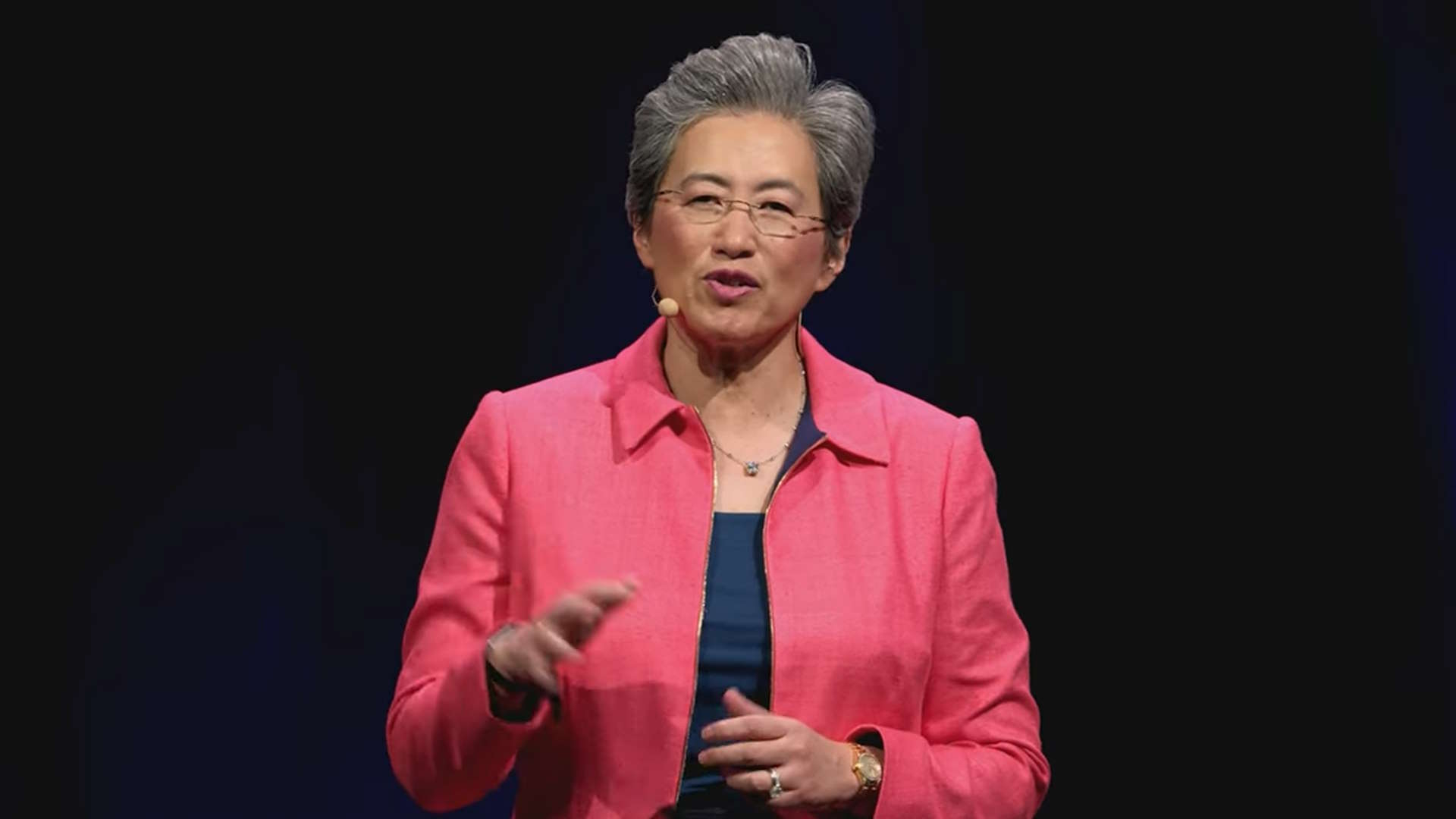AMD's Dr. Lisa Su on the role of artificial intelligence in gaming: 'Not everything has to be rendered'
Game creation is one thing, but AMD's CEO believes that AI is going to be increasingly used by developers to get games onto your screen without necessarily rendering everything.

AMD's popular CEO, Dr. Lisa Su, sees a gaming world where developers are using more AI for how games get on your screen and not just as creative tools for workflow. And maybe AMD is going to empower those devs with future features, just like a certain other graphics/AI company.
Despite the Computex 2024 show not really starting until tomorrow, we've already had the opening keynote, where AMD's Dr. Lisa Su introduced us to the next generation of Ryzen 9000-series gaming and Ryzen AI chips. And, while those are separate categories of CPU right now, be in no doubt that AI is coming to the desktop. But what's that going to look like for gamers?
Well, I asked Dr. Su what she thinks AI's place in gaming is. Does she see it as just a creative tool for developers, or is it going to deliver something tangible to us gamers, too?
"I think you're going to see AI everywhere," she tells me, "and AI for gaming, certainly in developers you'll see that. But I also think that as we go forward game developers will want to use more AI—not everything has to be rendered.
"There are some things you can do with partial AI and you're going to see more of that going forward in future development systems."
The most pervasive use of AI that gamers will be aware of right now is precisely that; as something which proves that not everything has to be rendered. But it's being used by the competition, with Nvidia always keen to note that with DLSS and Frame Generation something like only 1/8th of the pixels you see are actually rendered.
At the moment, however, AMD does not use AI in its upscaling or frame generation, but could this be a hint that maybe that might change in the not too distant future?
The biggest gaming news, reviews and hardware deals
Keep up to date with the most important stories and the best deals, as picked by the PC Gamer team.
Nvidia uses the Tensor Cores of its RTX graphics cards to handle the upscaling on its GPUs—aligned with using per-game training from its AI data centers, too—and it also uses some AI to manage the Frame Generation feature. The result is that Nvidia's solution is less graphically glitchy than AMD's, though it does require proprietary hardware and implementation, something the red team has been historically reticent to put on gamers.
But AMD's current non-AI approach does deliver a gaming experience that's almost on par with what Nvidia's tech offers, and so an updated FSR wouldn't need a whole lot more tidying up—with the right AI—to bring it level.
Catch up with Computex 2024: We're on the ground at Taiwan's biggest tech show to see what Nvidia, AMD, Intel, Asus, Gigabyte, MSI and more have to show.

Dave has been gaming since the days of Zaxxon and Lady Bug on the Colecovision, and code books for the Commodore Vic 20 (Death Race 2000!). He built his first gaming PC at the tender age of 16, and finally finished bug-fixing the Cyrix-based system around a year later. When he dropped it out of the window. He first started writing for Official PlayStation Magazine and Xbox World many decades ago, then moved onto PC Format full-time, then PC Gamer, TechRadar, and T3 among others. Now he's back, writing about the nightmarish graphics card market, CPUs with more cores than sense, gaming laptops hotter than the sun, and SSDs more capacious than a Cybertruck.


